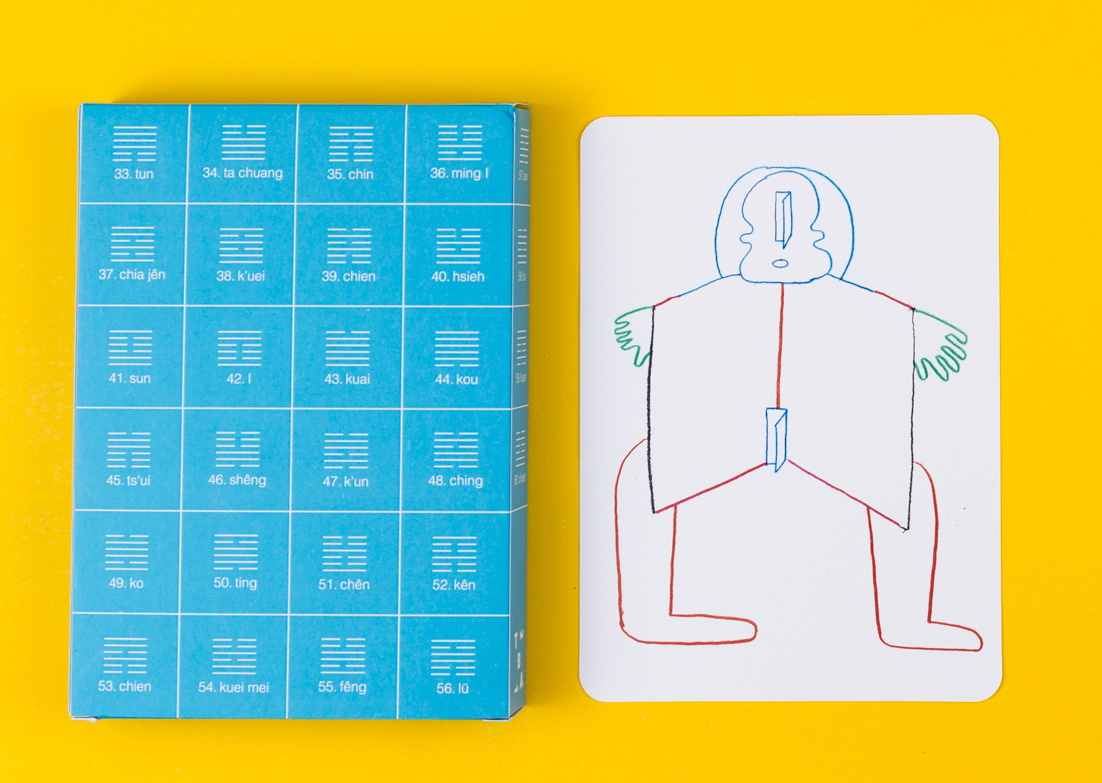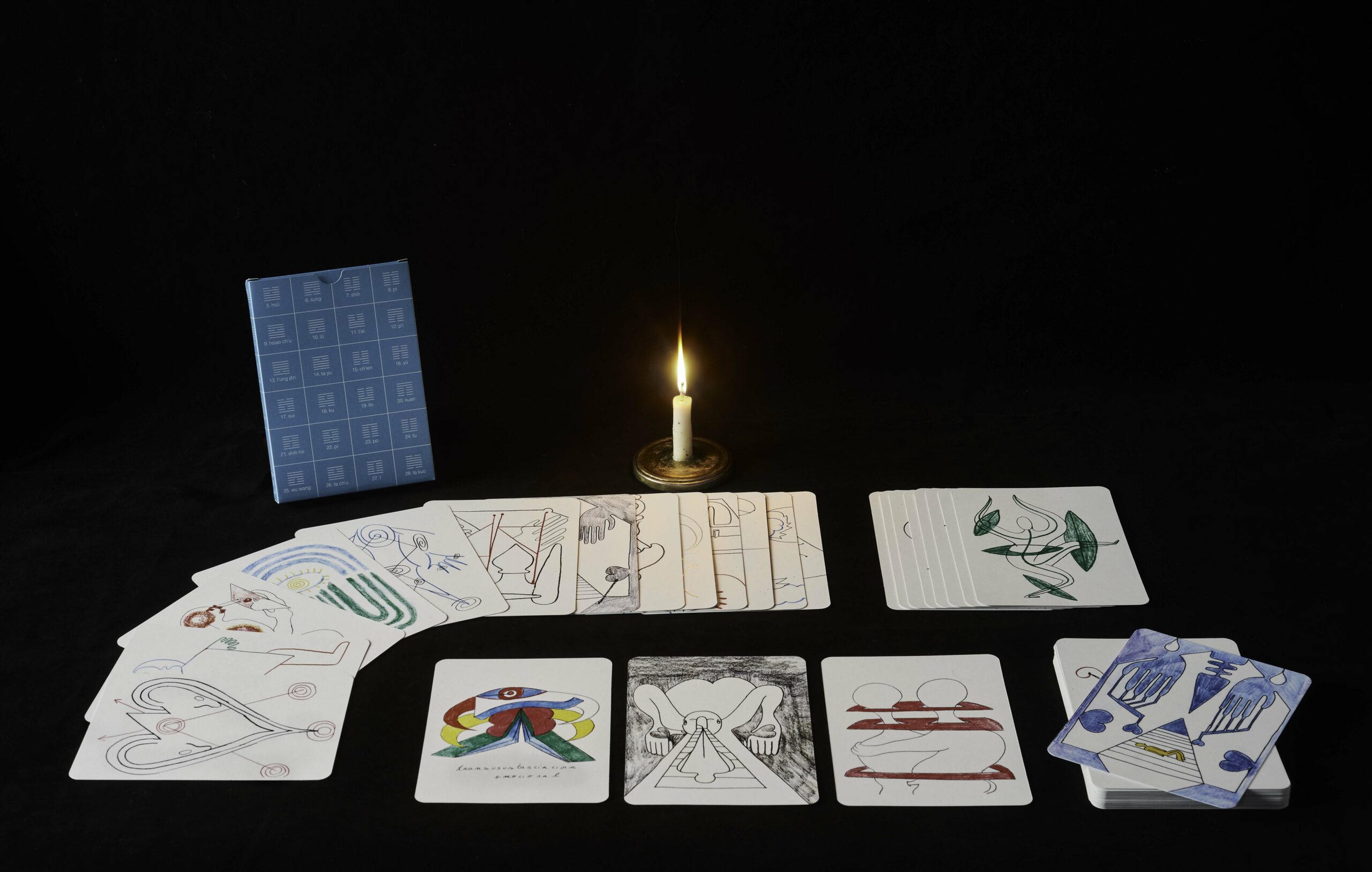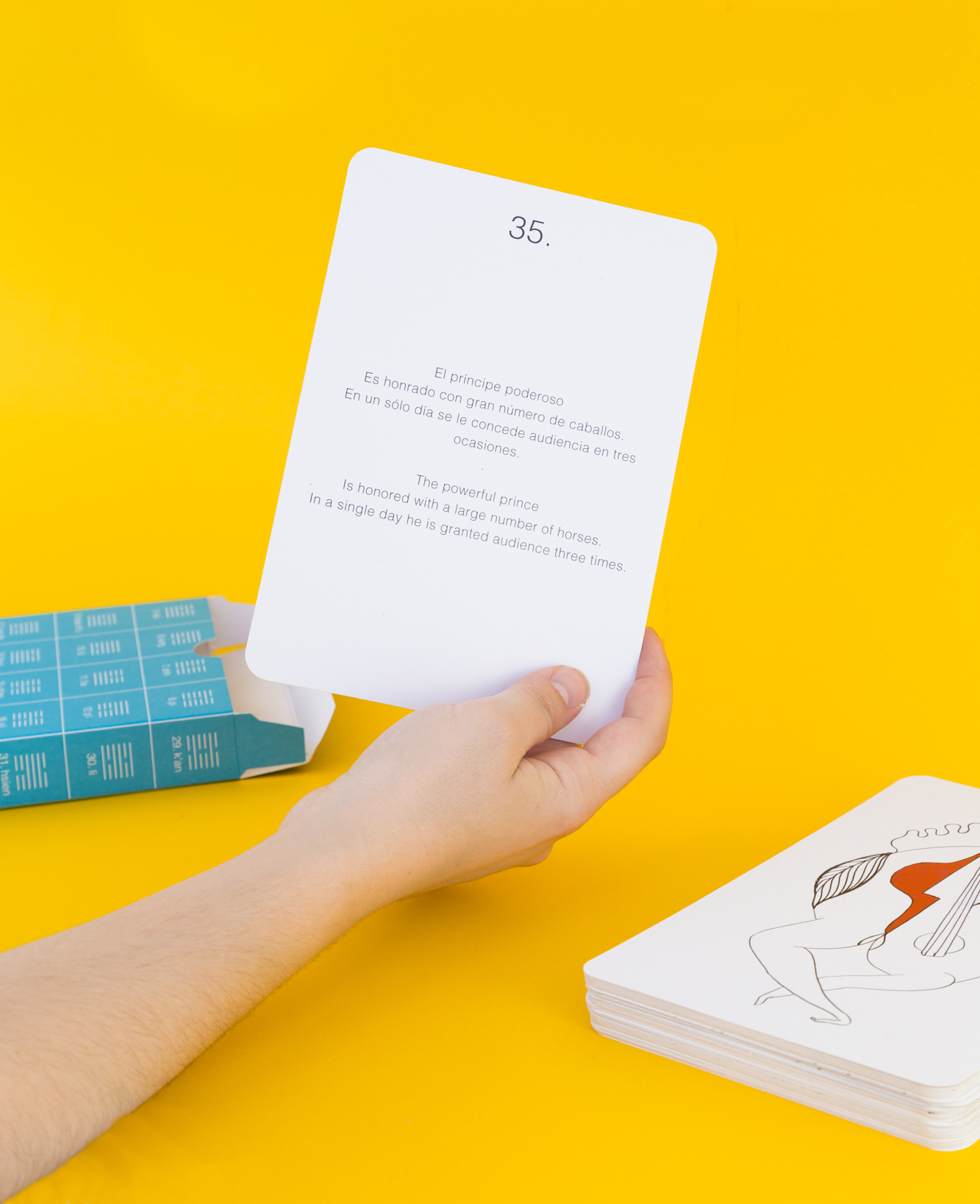In this game, Navarro draws on the proposal of Hydrohexagrams (For Tahuata), a work he developed during the TBA21–Academy expedition to the Marquesas in 2016. In the Pacific village of Hapatoni on the Marquesan island of Tahuata, Navarro invited the local community to pose a question to the ocean by tossing three I-Ching coins into the waves six times. In preparation for this consultation, the village collectively decided to inquire: Will the solidarity and generosity of our ancestors be transmitted to future generations?

1. Before beginning to use the cards, say to yourself: “I am chance. I am a coin spinning in the eternity of possibilities. My hands are hexagrams, which choose a unique card to my destiny.”
2. Now, shuffle the deck.
3. Focus on asking an existential question from within that calls for an answer from without.
4. How to choose a card? When choosing the specific card that will respond to your question, look for a creative way of choosing. For example, throw the cards in the air and catch one, choose a card from the deck without looking, or ask a friendly cat to take one with its mouth.
5. Use the drawing and the judgment as an interpretation tool for your initial question.
6. Leave the card resting in a visible everyday space for the necessary time until the image brings about a conclusion.
7. Put the cards back in the box and allow them to rest.
This sixty-four cards game takes elements of the I-Ching, the ancient divination text, and dissects and summarizes them in new ways to invite its players to become chance itself. In turn, the game offers an image as a dreamlike visual symbol while removing the acts associated with the original ritual, which involve throwing three coins, drawing a hexagram, and searching for the resulting text in the book. Each card in this deck has, on the back of the image, one of sixty-four judgements with its corresponding number. After asking a question and randomly choosing a card, the player can see the traditional hexagram of the I-Ching and its corresponding name by searching for its number on the box. Is there an energy that weaves events and their future outcome, from the most mundane to the most transcendental, from the waves in the ocean to the celestial spheres in their ancestral orbits? The I-Ching acts as an oracle that invokes this unpredictable energy by providing us with answers when we consult it. What would happen if instead of surrendering to this uncertain energy we became it?

Card deck by Eduardo Navarro, 2023.
Text based on the I-Ching (Book of Changes), as translated by Richard Wilhelm and Cary F.Baynes, 1950 edition.
Produced on the occasion of “Remedios. Where new land might grow,” with works from the collection of TBA21 Thyssen-Bornemisza Art Contemporary, curated by Daniela Zyman, C3A Centro de Creación Contemporánea de Andalucía, Córdoba.
April 14, 2023–March 31,
2024. Graphic design: Lana Jerichova.

Designed by artist Eduardo Navarro, the card game I combines the primary elements of the I-Ching (Book of Changes), the ancient script used for interpreting divinatory prophecies that originated during China’s Western Zhou period (1046–771 BCE). While I operates using simple rules and employs a limited set of symbols, the inherent structural ambiguity of the I-Ching enables a combinatory rhetorical-semiotic shuffling that can respond to complexities and unveil their multiple, even infinite, resonances. The game invites players to become vectors of serendipity, embracing unexpected encounters with the visions unleashed by the law of correspondences. It explores the symmetries and the pathways between the macrocosmic and the microcosmic, revealing the unbreakable bonds between the smallest and tiniest scales of existence and the vast powers and constellations of the universe. Rather than seeking to control the forces and imponderability of planetary existence, I teaches its players to surrender and find comfort and beauty in the whirls and whorls of metamorphosis within the ever-expansive and open-ended morphological hyper-universe. It engages you in conversation with nonhuman beings and forges apractice of rhetorical invention that taps into the intelligence of other forms of order and their disruptions.
